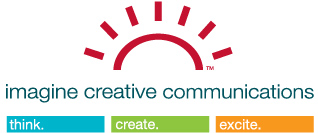Recently, I received an RFP from a potential client that I really wanted to work with. I eagerly read through it – but I ended up not responding. Why? My proposal had to include actual designs. That is what’s known in the industry as ‘spec work’.
The Association of Registered Graphic Designers of Ontario describes spec (or speculative) work as “a project competition that is ‘open call’ where designers are required to submit uncompensated creative work as part of the selection process.” While not a member of the Association, I do adhere to its professional code of conduct, which does not permit engaging in spec work.
 Why is spec work not allowed? Simply put, it devalues the role of the professional graphic designer, coming from an attitude that design work is a commodity – like, say, a toaster. But hiring a professional designer is not the same as buying a toaster that you can return if you decide you don’t like the colour.
Why is spec work not allowed? Simply put, it devalues the role of the professional graphic designer, coming from an attitude that design work is a commodity – like, say, a toaster. But hiring a professional designer is not the same as buying a toaster that you can return if you decide you don’t like the colour.
Spec work also puts much more of the risk in the selection process on the shoulders of the designer and dooms any resulting business relationship to be an unhealthy one.
To be fair, on the other side of the table is the prospective client who needs to minimize risk. I find this is particularly true for nonprofits that must steward donor resources carefully. “How do I know we’ll like the work you do for us? I don’t want to waste our money – or time – on something we won’t like.” I frequently hear this in a conversation with a prospective client. Perhaps their previous experience has been negative – a designer unresponsive to their needs or designs that did not satisfy the project brief. Maybe they never thought about it.
So how does a business or nonprofit minimize the risk of hiring a graphic designer without spec work? It involves doing some homework. If you are hiring a new designer there are four things you need to do:
1. Check out their portfolio. Past performance is a good predictor of future performance. Do you like their work? Look to see if there is a sameness to it. Does it reflect the uniqueness of each client’s needs. Most designers now have online portfolios, making this easier to do.
2. Check references. Find out what the designer is like to work with. Are they responsive? Do they take the time to really learn about their client? Do they offer value? Do they say please and thank you?
3. Consider their experience and expertise. Do you have confidence that the designer is up to the job? If the designer has not worked in your industry, it does not mean they are unqualified. Instead, look for a desire to learn, flexibility and a level of technical and creative expertise that matches your needs. By the same token, you might not want to trust a multi-million dollar annual campaign to a fresh graduate.
4. Talk to the designer. Get to know them and make sure the relationship has a good feel to it. Talk about their design process, their style and philosophy. Discuss assumptions and expectations on both sides of the relationship – it becomes a contract, whether verbal or written, designed to protect both of you.
When you engage a graphic designer you are hiring more than someone who makes it look pretty. You are hiring a consultant, an idea person, a communicator, someone who should have the success of your business or organization at heart. You are not buying a toaster.
What do you think? Leave a comment and join the conversation.
